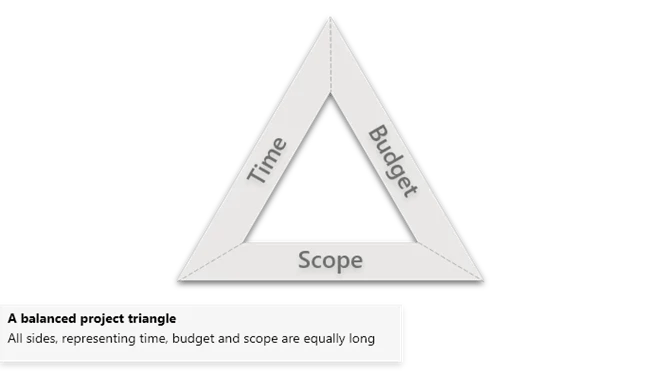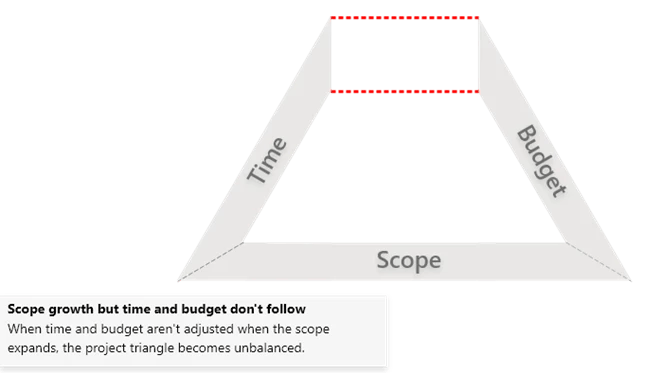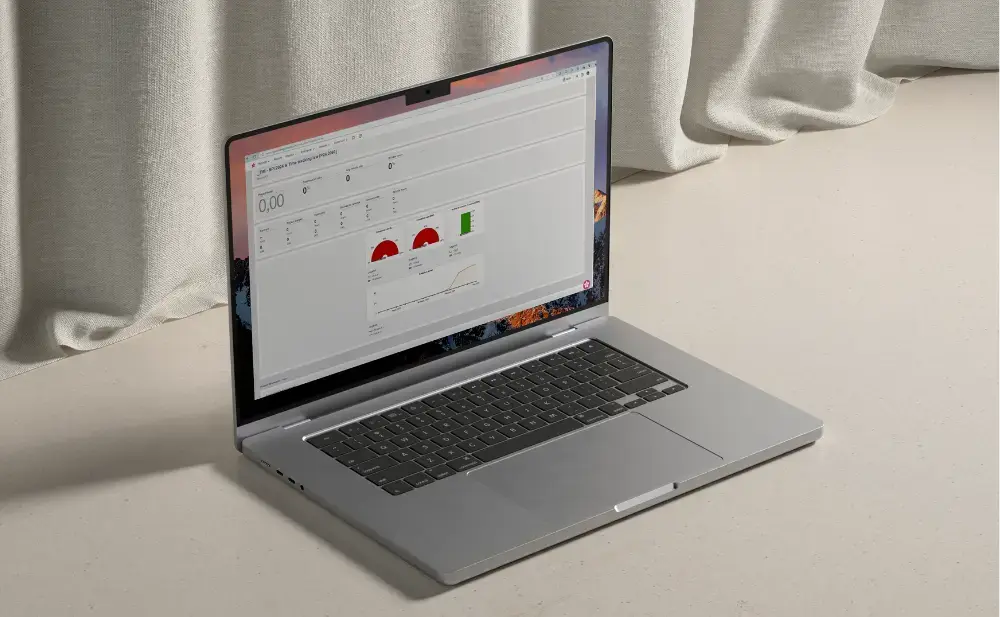Project Management 101: Understanding the Project Lifecycle
6 min read
Time tracking
Build your perfect data foundation for spotless invoicing and deep business insights with easy time tracking.
Project management
Be a world champion project manager. Keep your projects on track - and profitable.
Resource management
Efficiently staff projects and run a predictable business with confidence.
Insights & Reporting
Get smarter - faster - to make clever decisions for long-term growth impact.
Project accounting & Invoicing
Invoice everything - fast and accurate - while staying on top of project finances.
Staff & Salary
Give accountants and HR an intelligent tool to eliminate draining administration.
Financial Systems
TimeLog offers standard integrations for all your favourite financial systems. Save time and reduce manual tasks.
Payroll Solutions
TimeLog offers standard integrations for multiple payroll solutions. Get easy salary administration and only enter payroll information once.
Add-ons
Track time automatically via Outlook, use gamification or find another add-on that can support your business.
Multiple Legal Entities
You can create synergy between your departments and across borders and offices with the Multiple Legal Entities module from TimeLog.
Business Intelligence
Utilise the insights you get from TimeLog to the fullest. Our system is ready to integrate with multiple BI solutions.
Partner Integrations
TimeLog PSA is part of a large ecosystem. Get an overview of all the partner integrations in the TimeLog family.
Economy department
Save 1-2 days a month on your invoicing process.
Project teams
From planning to execution and evaluation. Robust tools for every project manager.
Management teams
Create a performance-driven culture with solid reporting capabilities.
Large enterprises
Enhance operations and performance across entities, countries and departments.
NGOs and non-profit organisations
Simplify internal processes, spend less time on administration, and get documentation in place - at a discounted rate.
Blog
Get inspired to run an even better business with articles, guides and analyses.
Guides, podcasts and webinars
Get access to templates, guides and webinars that help and inspire you.
Help Center
Looking for help material and user guides to the TimeLog system? Look no further. Find all the help you need now.
Get a single source of truth
Discover how companies maintain a single source of truth across borders, departments, and currencies.
Get integrated
Discover the advantages customers gain from utilising our integrations and API.
Reporting in real-time
Explore how others leverage reporting to optimise their processes and make informed decisions.
Get started with resource planning
Discover how other companies thoroughly grasp their resources and enhance their ability to predict future trends.
Improved project financials
This is how the efficient financial toolbox from TimeLog helps project managers and CFOs improve their project financials.
Faster invoicing
Discover how other companies have slashed the time spent on invoicing by 75% - and uncover how you can achieve the same efficiency.
The Story of TimeLog
Get insights on TimeLog and how we can help you grow and evolve your business.
Employees
See who shows up every day to deliver the best PSA solution.
Career
What's life like at TimeLog? Are we hiring? Get the answer here.
Partner
Create even more value for your customers, as well as ours, as a TimeLog Partner.
Premium Service
Online Help Center, tailored onboarding and support from Day 1.
Corporate Social Responsibility
We work to ensure a positive impact on planet, people and businesses.
Security and GDPR
Learn more about how we work to keep your data safe and provide maximum security.
6 min read
To be a successful project manager, you must be able to deliver projects that balance time, budget and scope. Using the project triangle, you can keep that balance all the way to project handover.

If you're a serious project manager, you've probably experienced that almost all projects face challenges.
Your project team may be delayed, or it may be more expensive to develop items for final delivery.
Your customer may also want to add more elements to the agreed delivery.
Whatever the reason for the change, you must always balance the three crucial variables, time, budget and scope, if you want to complete your project because you cannot change one of the variables without affecting the other two.
To keep your balance, you can use the project triangle.
In this article, you can learn all about the project triangle and how to balance the three variables as a project manager.
The Project Triangle is a visualisation tool to visualise the project's balance between time, budget and scope.
More than a tool, it's a visualisation of the inescapable truth of projects - that you can't make a project bigger without making it more expensive or extending the timeframe. And you can't spend more time without making it more expensive.
When you build the project plan and set the framework for the project with the steering committee and the project sponsor in the start-up phase, you can insert the variables; time, budget and scope in the project triangle.
If you have done your preparatory work well and ensured there is enough time and budget to achieve the scope (in the right quality), you can say that the project is in balance.
At the start of the project, the project triangle is usually in balance if you have aligned time, budget and scope.
Being balanced means that all sides of the triangle are equal in length. The triangle is in balance.
You might like: What are project milestones? Guide, examples, and template

But if you adjust one of the variables, it quickly becomes clear that the project is no longer in balance. And then, you have to react as a project manager if you want the project to succeed.
Especially if you are to succeed with the fourth variable - project quality - which also creeps into the project triangle.
We will come back to this. But first, let's get the four variables in place.
To understand how the project triangle works in practice, you must understand what we mean when we say scope, time, budget and quality.
The project scope sets the framework for what is to be delivered and what is not to be delivered. You can call it the project scope.
If the scope is extended, the project timeframe or budget must be increased to maintain the balance.
Alternatively, you may be forced to compromise on quality if you can't get more time or resources.

How long does your project team have to deliver? When thinking about time, it's a good idea to break down the elements of the scope deliverables into time estimates for how long each deliverable will take to execute.
It also helps you to set a realistic timeline and deadline.
If you have to extend the deadline or the number of hours your team has to spend on deliverables, you will also have to find more budget to pay the team.
Or reduce the scope or quality of delivery.
How many resources do you have available to deliver?
Resources usually mean hours in the consulting industry (and are therefore closely related to the time factor of the project). But the budget includes equipment, materials, tools or facility rental.
If your sponsor or client cuts the budget along the way, you may have to limit the time and scope to deliver.
The fourth variable that is directly affected by the other three is quality.
It can be said that if the project balance is not maintained during the process, the quality of the delivery will almost inevitably suffer.
How you define quality depends on the specific delivery.
But you can't spend less time and less budget and increase the scope without compromising the quality of the deliverables.
When negotiating with clients who are very demanding on price and deadline or want unrealistic value for money, it can be beneficial to meticulously document your expectations on quality based on the framework set by your client.
Too often, project managers fail to discuss quality within the context of time, budget and scope.
You might like: 5 of the biggest project management mistakes
But in the end, few will compromise too much on quality. And they will have an increased incentive to agree to an increased budget, deadline or a smaller scope if the quality is in order.
Let's summarize how the four variables of the project triangle affect the obstacle.
Your company has sold an IT development project to a customer.
From the start, you, the steering group and the client agree to deliver a system that can handle the client's internal communication among employees. You agree on a price and that it should be delivered within 12 months.
Along the way, the customer's representative talks to the staff and finds out that it would be brilliant to link the existing task management to the solution you will develop.
In other words, the customer extends the scope but does not allow for the deadline to be extended, as the company has to merge with a subsidiary by the deadline, and the system has to be up and running before then.
Since the scope and timeframe are fixed, your only option is to include more developers on your project team - thus increasing the project budget.
Alternatively, you can maintain the project triangle without increasing the budget by cutting the quality of the code. But, asked directly, the customer is unlikely to accept a solution that crashes or is full of bugs.
The iron triangle is also often referred to when discussing the project triangle.
It is named the iron triangle because the triangle is not flexible. The triangle's three sides are locked in a relationship that dictates the possibilities of the project's scope, budget and timeframe.
Fast, cheap or good - you only get 2 out of 3
Another way to think about the project triangle (if we briefly ignore the quality variable) is the 2-out-of-3 approach.
It is helpful in a negotiation where you must clearly draw the lines to make a choice.
The 2-out-of-3 approach says you can squeeze two out of three qualitative variables - but not all three simultaneously.
With the three qualitative variables, we understand that all customers want to get their projects executed as quickly as possible, as cheaply as possible and as good as possible ("good" is understood as a fusion of scope and quality in this context).
*Price and time consumption are closely related for industries with employees as the primary cost in projects. But if the timeframe is extended, you can avoid involving extraordinary resources, such as external subcontractors or resources from other projects. Involving these increases the cost of time spent on the project.
You might also like: Project management in Excel - What are the advantages and disadvantages?
You can use the project triangle for agile and more traditionally run projects.
In agile, the scope will always be flexible while resources and time are more fixed (for instance, if you have a dedicated product team working in sprints).
The project triangle is only a model you can use to understand and visualise the interrelationship between scope, time and budget.
Another matter is managing projects in practice, where decisions are rarely based on fixed models.
However, you can use a few strategies to keep the project triangle relevant and balanced throughout the project.
Knowing where you're willing to compromise during the project and where there's no room for flexibility is good.
You can clarify this with project stakeholders early in the process.
Perhaps the timeframe is not the main priority, but it can be extended if the budget does not increase and you can deliver what is scoped.
Maybe you have scoped some nice-to-have deliverables that can be cut if you see that the timeframe or budget increases are more than acceptable.
If your risk analysis early on reveals that some of the project's phases or deliverables risk breaking the boundaries of either time, budget or scope, it's a good idea to plan how you will manage these risks.
If time is slipping on a phase, is adding resources an option?
If you can make agreements in advance that allow you to maintain balance in the project triangle, you're much better off than if you have to restore balance later in the project and have to negotiate an increased budget, more time or a smaller scope as the project progresses.
If you keep the project stakeholders continuously updated on how your project team is performing against the project triangle variables, any adjustments will also be minor and not come as a surprise to the client and steering committee.
This will make it easier to get support for decisions to adjust the framework if needed.
Feel free to use the project triangle as a visual tool to continuously show if the project is progressing or if the scope is starting to expand.
It gives you a good idea of how the whole project fits together and why it is necessary to balance time, budget, scope and quality.
 Read more
Read more

25 min read
 Read more
Read more
 Read more
Read more